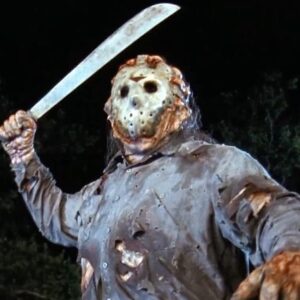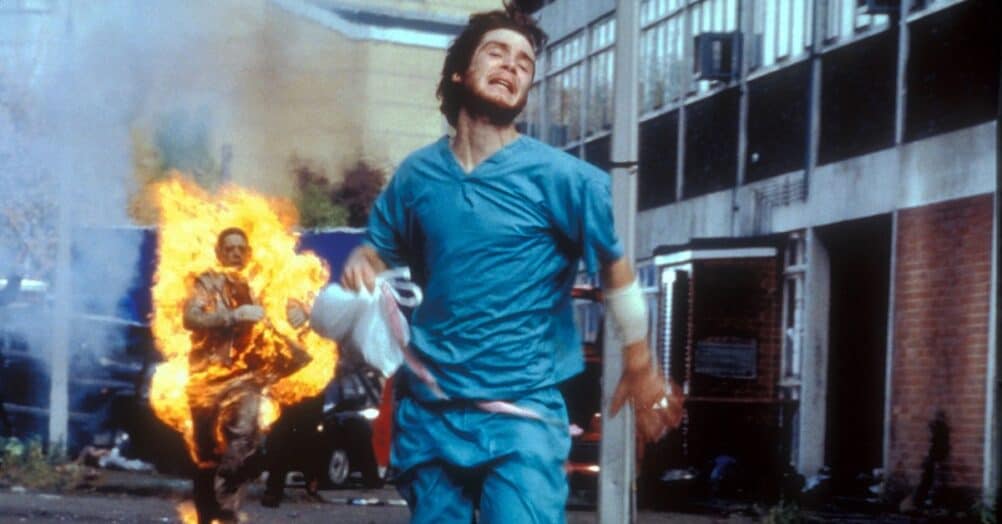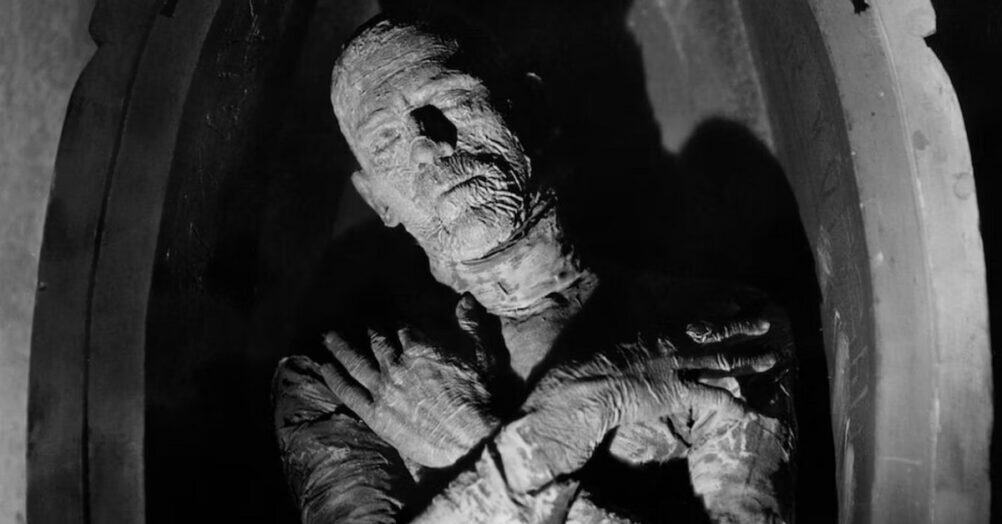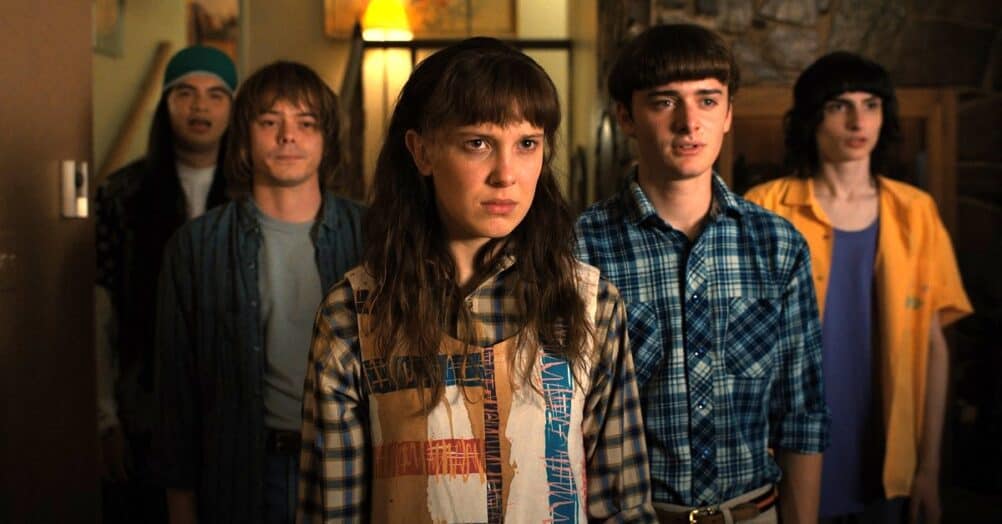Last Updated on October 4, 2024
The horror genre might be the only genre where a low budget can have a positive effect on the final product. Horror movie fans are often swayed by the quote-unquote charm of a thriller with mere pennies to its name; and if the finished picture has a certain energy and style to it, the fact that it had no money to work with becomes part of its allure and legacy. We think of movies like Night of the Living Dead, The Blair Witch Project and The Texas Chainsaw Massacre, to name an obvious few. Perhaps a not-so-obvious choice would be Basket Case (watch it HERE), Frank Henenlotter’s deranged tale about a couple of conjoined twins who share an unusual bond. Or at least, they used to… It’s a funky, disorienting little item, and while the lack of money is always apparent on-screen, it’s ends up being to the movie’s benefit. The do-it-yourself nature of the Henenlotter’s grindhouse flick is one of its main appeals, and while the director no doubt continues to wish he had more of a budget back in the day, ultimately genre fans enjoy this movie because of the janky FX and guerrilla filmmaking on display. So how did this freak of nature end up being born? Pack your bags – er, baskets – because we’re moving to the city that never sleeps to tell the tale of What Happened to Basket Case.
Basket Case was a movie that was going to get made no matter the cost. It turns out that cost was somewhere in the neighborhood of $35,000 – not much money now, not much money then, at least in terms of making a feature-length movie on 16mm. Director Frank Henenlotter had only made a couple of short films by the time Basket Case came around. Interestingly, Frank had never even thought about becoming a director as a full-time profession – he just liked making these little movies as a hobby, didn’t necessarily take it very seriously.
One of his short films was called Slash of the Knife, a cheeky pseudo-documentary about circumcision. It played one night in front of the notorious John Waters comedy Pink Flamingos in New York City and caught the attention of a producer named Edgar Ievans, who thought Frank was nuts – in a good way – and proposed a collaboration.
Frank and Ievans came up with a concept about mad scientists called Ooze, and even intended to have infamous Pink Flamingos star Divine play a lead role out of drag. But no money was coming in for that particular project. Frustrated, Frank proposed making a movie low-budget that was completely off-the-wall, something so low-brow and ridiculous that people would have to go see it. He came up with the title Basket Case and envisioned a movie about a little monster in a box that would frequently jump out of it and kill people. Or as Frank referred to it: a “malignant jack-in-the-box.” He pictured the box being carried around from victim to victim by a young man, which only makes sense because how would the little demon get around otherwise? But he couldn’t get to the bottom of why this guy was carrying around the monster. Then one day, while eating Nathan’s hot dogs in Times Square, Frank had a eureka moment: The guy carrying the box was the little monster’s twin brother! How and why that would be the case – pun intended – would come later, but once Frank had that question answered, Basket Case started to come together.

Still, there was no money to play with; no investor would come aboard just based on that insane idea. So Frank and his producer Edgar decided to pool the money they had together – which amounted to about $8,000 each – and start making it. Frank was determined to just start shooting it while the fire was still burning inside of him, hoping they could use whatever footage they shot to convince outside investors to give them money to complete his demented debut.
Frank’s friend Ilze Balodis was a registrar at the American Academy of Dramatic Arts, a prestigious private school located on New York’s Madison Avenue. Ilze became the movie’s de facto casting director, recruiting students from the school to take part in this wacko horror-comedy. The film’s lead, Kevin VanHentenryck was a student there, and had previously worked on Henenlotter’s short Slash of the Knife, which gave him a leg up in nabbing the part of the tortured hero-slash-villain Duane Bradley.
Basket Case would be shot during long weekends throughout the year – almost everyone working on it had full time jobs elsewhere, so weekends were the only time they could all get together. Besides, they still had barely any money, sometimes couldn’t even afford to buy lunch – hence certain shoot days were determined by whether or not they could feed the crew or not. Ilze would make lunch sometimes when there was no money for pizza, and when they did have pizza, they’d frequently use the leftovers for gore effects. This was a very low-budget flick indeed, so much so that Frank and Edgar would frequently go dumpster-diving in a quest to secure props.
While the film mostly takes place in the time capsule that is the skeevy late 70s version of Times Square, most of the film was shot downtown inside a friend’s loft. The nasty hallways and rooms of the Hotel Broslin were all constructed out of whole cloth by Frank and Edgar and whoever else might lend a hand; the owner of the loft, artist Ugis Nigals, found himself sleeping at night in the midst of the creepy makeshift hotel, the walls sometimes splattered with fake blood.
Whenever Frank and his crew were able to shoot on location, as in the scene where Duane strolls down a Times Square avenue looking for a place to stay, they had to shoot fast and loose, because they’d be accosted by all forms of New York’s creatures of the night. Apparently one guy even attempted to jump into their van as they eased it down the block, which solidified the notion they could not afford to risk their equipment, or hell, their lives, shooting there.
Of course, they couldn’t afford to shoot anywhere – quite literally – and the entirety of the movie was shot without permits from the state. A sequence shot at the Statue of Liberty was hastily done before any security detail could be dispatched – Frank reasoned they would be able to get the brief scene finished before anyone noticed them, and he was right. This was the Ed Wood style of guerrilla filmmaking, and it helps lend the movie its grubby do-it-yourself charm… for lack of a better word. Another genuine location came in the form of New York’s legendary Hellfire Club, a notorious BDSM club located in the Meatpacking District. The Hellfire Club was known for housing all sorts of debauchery, and Frank and his crew decided to shoot a bar sequence in the club’s basement. Coincidentally, William Friedkin had just shot scenes for his cop thriller Cruising there and had apparently left some seedy props behind. In a bit of irony, suddenly Henenlotter had to shoot around some of the sleazier stuff hanging around in order to make his scene appear a bit more… normal.

We haven’t spent any time on the movie’s other main lead: Belial, Duane’s miniature twin who spends most of the runtime hiding away in a wicker basket. But he can’t hide forever, and when he does appear he’s quite the bizarre sight to behold. A latex lump that was constructed by future Oscar-winner Kevin Haney, Belial is a puppet who was usually operated by Henenlotter. Belial’s face was actually taken from a mold of Kevin VanHentenryck’s face, which isn’t immediately evident although if you watch the film with that in mind you can see some resemblance. Kevin also provided the monster’s chilling screams in post-production.
The filmmakers had to get creative during one sequence, where we see Belial grasping at the air in a bed, because the creature had shrunk for one reason or another and neither Frank nor anyone else could puppeteer the thing. So Frank enlisted his casting director’s daughter to perform the stunt; so when you see that icky moment – which only lasts a second or two – think about how an eight-year-old is under the bed operating the ghastly creature.
One of the film’s standout sequences – for better or worse – involves a jealous Belial going on a mini-rampage in his hotel room while his brother is gone. Clearly accomplished using stop-motion animation, the sequence provides laughs and gasps in equal measure. Since he didn’t have any actual animators in his rolodex, Henenlotter pulled off the sequence himself. A self-admitted impatient man, Frank would later admit he was the wrong person to do this, but beggars can’t be choosers, so he spent quite a long time moving Belial inch by inch around the room. When he watched the footage he had to work with, Frank hated it so much that he tossed the reel of film across his room and let it sit there for months as a reminder to himself how bad it was. Some time later, when he finally picked it up again and watched it, he realized he could play the scene for laughs, and after some more work on it decided to keep it in and lean into the ridiculousness of it all.
Not so ridiculous, at least for some people, was the disturbing scene where Belial attacks Duane’s gal-pal Sharon while she sleeps. The scene culminates with Belial gyrating on top of her, indicating that the most unthinkable thing has indeed happened. To add an extra level of horror, Henenlotter decided to cover actress Terri Susan Smith’s lower half with blood. Apparently, this upset the small crew Frank was working with, and they all decided this was finally a bridge too far and walked off the set. Since they barely had a crew to begin with, Frank and his actors decided to forge ahead with the sequence, just the handful of them finishing it by the skin of their teeth. Years later, Frank still seems mystified as to why that moment was suddenly too much for his skeleton crew, but evidently everyone has their limits, even in the world of Basket Case.
Shooting went on for over a year; sometimes they were shooting 12,14,16 hour days. When it was finally done, Henenlotter edited the entire thing in his apartment. The director has admitted many times over the years that he didn’t think anyone would see the film, at least, not enough people to make a huge difference. He assumed Basket Case would play for a few weeks in a junky Times Square theater and make just enough money to eek out a profit so that he and his producer could go out and make something a little more substantial. How surprised he would be to find out we’re all sitting here watching this video about the making of the film!

In August of 1981, Frank and Edgar held a screening of Basket Case in 16mm in order to raise additional funds for the 35mm blow-up. The screening was a big success, and ultimately Basket Case was acquired by the distributor Analysis Film Corporation. That would seem like good news, but Henenlotter was in for a bucket of cold water: The distributor was turned off by the ample amount of gore in the film and wanted to focus on its more comedic elements. For Frank, the gore and the comedy went hand in hand, but Analysis thought otherwise and decided to trim out the blood in several sequences, leaving the movie a rather dulled-down version of itself. The distributor opened the film in a handful of screens across the country to little fanfare, and it looked as if it was indeed going to die a lonely death, one that would’ve disappointed even Henenlotter, who already had low expectations for making a profit.
Then an angel came to help Basket Case – an angel with the name Joe Bob Briggs. Analysis had booked Basket Case into a theater in Dallas and wanted the popular hillbilly critic to host it. Briggs agreed, but with an important caveat: he would show Henenlotter’s cut of the film, not the softer version. Grudgingly, the distributor gave in, and much to their surprise the film did gangbusters business in Dallas, selling out midnight shows.
Newly convinced of the film’s success in its gorier incarnation, Analysis decided to put the uncut version in the Waverly Theater in New York, where it sold out regularly on the weekends. Shockingly, Henenlotter wasn’t even aware this had happened, and one day found himself wondering what movie playing at the Waverly had a gaggle of people lined up for it. Running into one of the make-up effects guys who worked on the film, Frank would find to his amazement that it was the uncut version of his naughty little $35,000 movie – it was becoming an unlikely phenomenon on the midnight circuit without his knowledge.
Basket Case went on to play at the Waverly for almost two years straight. Naturally, it eventually did big business on the home video market as well. The critics weren’t kind, but that only helped the cause: the famously grumpy Rex Reed called it the “sickest movie” he’d ever seen – a quote that made people want to see it for themselves even more.
In perhaps the biggest and most unlikely testament to the film’s status as a cult classic, the Museum of Modern Art restored Basket Case, making a 4K scan of it from the original 16mm negative. MoMA even held a special screening of the film in 2017 with many members of the cast and crew in attendance. Once again, Henenlotter was floored by the film’s successful legacy. At the screening, he said neither he nor Kevin VanHentenryck understand why it’s still so popular to this day, but obviously he’s grateful – after all, he went on to make two sequels to the movie, and frequently threatens a third one. Duane and Belial must be getting up there in age, but they’ve come this far, so who’s to say Belial doesn’t have one more stop-motion rampage in him..?
A couple of the previous episodes of What Happened to This Horror Movie? can be seen below. To see more, head over to our JoBlo Horror Originals YouTube channel – and subscribe while you’re there!




















Follow the JOBLO MOVIE NETWORK
Follow us on YOUTUBE
Follow ARROW IN THE HEAD
Follow AITH on YOUTUBE